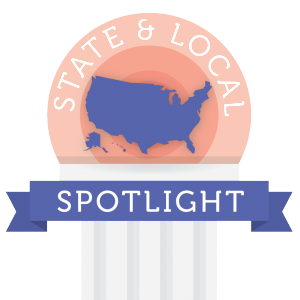 In New York City, unlike in many other localities, students get to pick where they go to high school. That selection process usually takes place in the sixth or seventh grade, so that students have ample time to meet qualifications and complete a lengthy application process.
In New York City, unlike in many other localities, students get to pick where they go to high school. That selection process usually takes place in the sixth or seventh grade, so that students have ample time to meet qualifications and complete a lengthy application process.
Formerly, that process was based on one compendium of information –an 800-page handbook written handbook. The book made it difficult for parents and students to sift through the knowledge without a serious investment of time and some frustration. It was time for a change.
Therefore, the New York City Department of Education’s (NYCDOE) Innovation Zone (iZone) and the Office of Student Enrollment (OSE) partnered with the Public Policy Lab (PPL) to find a way to better serve over 75,000 families in the area. They chose a human-centered approach to that problem.
Rather than assuming a solution to this paper-based, cumbersome application process, NYCDOE’s iZone, the OSE, and PPL chose to focus on the people they were trying to serve – working with them over two years to identify a solution that would truly meet their needs. That approach, called human-centered design (HCD), has a number of core tenets, which the partners followed to create a solution for future high schoolers.
Collecting User Feedback
First, they got to know all of their core users. That included more than just potential applicants. For instance, “it’s not just families who are our users. It is also all the people who help the families,” Vikram Mukhija, Director of Communications at the OSE, said. Guidance counselors in the high schools and counselors working at Family Welcome Centers could also use high school placement information to support the process.
Ultimately, the team determined that there are three key sets of stakeholders involved in selecting a high school: students (the decision makers), family members (project managers), and guidance counselors (process navigators). To gather input from all of their stakeholders, the innovation team spoke to the policymakers of OSE and the Bureau Enrollment Office. They also walked the halls of eight economic and racially diverse schools to speak with current eighth graders, guidance counselors, parent-coordinators, and visited the homes of five families to watch how they interacted around the admission process. In the end, the team spoke to four-dozen individuals across all five NYC bureaus to get to know their users and their needs.
Identifying a Core Design Challenge
Once they collected all of this data, they had to create a concrete and actionable challenge. “There were a lot of cookies and a lot of post-it notes involved,” Chelsea Mauldin, Executive Director of the PPL, half-jokingly shared.
She went on to explain the process of distillation, which involved the researcher and the designer taking the information they heard and turning it into “nuggets of insight.” The team utilized the nuggets of insight to create personas for their users, and identify specific needs for those personas.
Mauldin shared four critical needs that all stakeholders required:
- Tools to optimize the time they have left to make a decision
- Clear pathways to multiple futures
- More first-person experiences (either personal visits or hearing from those who have first-person accounts to share
- A better balance of facts and feelings
She highlighted that you are dealing with emotions when you focus on HCD. In choosing high schools, the team had to remember that there weren’t “75,000 12 year olds trying to be Mr. Spock. They have feelings, emotions, and aspirations. The system needed to design for those emotions and for that emotional reality.”
Keeping stakeholders involved
As the team developed solutions to these problems, they made sure to keep stakeholders involved. “Involving people in the co-design and co-creation throughout every step of the process can really impact how people feel about the project-whether or not it feels like it is coming down on them,” Kara Chesal, Program Manager at iZone, explained.
Additionally, Mauldin said many people have their systems in place and are invested in how those systems work. So, it becomes a “question of how do you do new things that people will actually find satisfying and desirable. This is always a challenge for a human center designer.”
The NYC School Choice Program, along with its partners, made sure to include the humans they serve in every step of their design process. Now, their new program better serves the real needs of students, and the people who support them in their high school selection. To find out what solution the team created, as well as more detail about how they applied HCD in New York City, check out our GovLoop Academy Course:
HCD in Action: NYC School Choice Program




Hi govloop! Thanks for sharing our story–NYCDOE launched its first product based on the human-centered design principles covered. Check out NYC School Finder at http://schoolfinder.nyc.gov and let us know what you think!